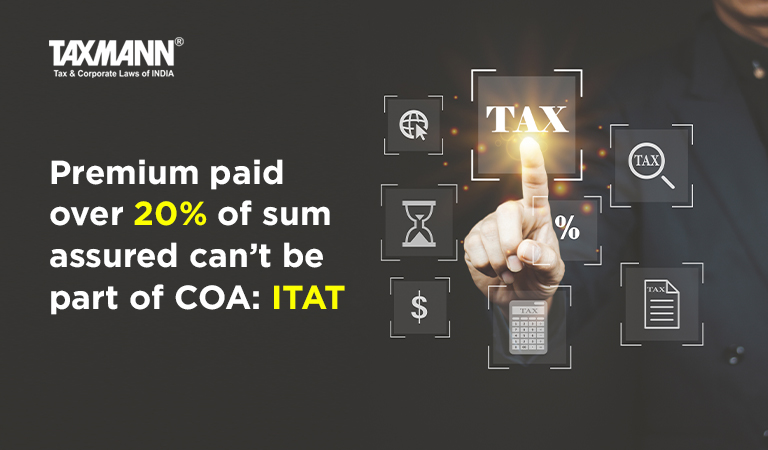Premium paid over 20% of sum assured can’t be part of COA: ITAT
- Blog|News|Income Tax|
- 2 Min Read
- By Taxmann
- |
- Last Updated on 6 June, 2022
Case Details: Bishista Bagchi v. DCIT - [2022] 138 taxmann.com 419 (Kolkata-Trib.)
Judiciary and Counsel Details
-
- Sanjay Garg, Judicial Member
- Indranil Banerjee, AR for the Appellant.
- Gautam Mondal, Addl. CIT-DR for the Respondent.
Facts of the Case
Assessee-individual purchased a life insurance policy with sum assured of Rs. 13 lakhs. The annual premium payable was Rs. 5 lakh (approx.) for two years only. The term of the policy was 10 years and the assessee received a maturity amount of the policy at Rs. 18,14,072.
The assessee filed return of income and declared maturity proceeds from the insurance policy under head capital gains. However, the Assessing Officer (AO) treated the same as income from other sources.
On appeal, the CIT(A) upheld the order of AO. Aggrieved-assessee filed the instant appeal before the Tribunal.
ITAT Held
The Kolkata Tribunal held that considering the sum assured on the life and the actual maturity value received by the assessee, it is apparent that there were two elements embedded in the policy. Firstly, the hedging of the risk of life and related benefits as are available under a simple life insurance policy; secondly, the element of investment.
Before the substitution of section 10(10D), w.e.f 1-4-2004, any sum received under a life insurance policy including the sum allocated by way of the bonus of such policy was exempt from taxation.
However, the Parliament while substituting section 10(10D) and inserting section (2A) to section 88 has denied the benefit of exemption and deduction in respect of policies if the premium paid towards policy exceeds 20% of the sum assured.
Considering the fact of the case, it can be safely assumed that the amount of premium paid by the assessee, which was more than 20% of the sum assured was the investment made by the assessee. Thus, the entire maturity value/gains at the time of extinguishment of the rights of the assessee in the said policy i.e. on the date of maturity are liable to be treated as capital gains.
Further, while computing the capital gains, the cost of acquisition will be taken as the amount paid towards the premium minus 20% of the sum assured.
That 20% of the sum assured shall be treated as not part of the investment rather towards the cost of hedging of risk under the insurance policy, for which a deduction is already available to that extent under section 88(2A) [section 80C w.e.f. 01-04-2006].
Disclaimer: The content/information published on the website is only for general information of the user and shall not be construed as legal advice. While the Taxmann has exercised reasonable efforts to ensure the veracity of information/content published, Taxmann shall be under no liability in any manner whatsoever for incorrect information, if any.

Taxmann Publications has a dedicated in-house Research & Editorial Team. This team consists of a team of Chartered Accountants, Company Secretaries, and Lawyers. This team works under the guidance and supervision of editor-in-chief Mr Rakesh Bhargava.
The Research and Editorial Team is responsible for developing reliable and accurate content for the readers. The team follows the six-sigma approach to achieve the benchmark of zero error in its publications and research platforms. The team ensures that the following publication guidelines are thoroughly followed while developing the content:
- The statutory material is obtained only from the authorized and reliable sources
- All the latest developments in the judicial and legislative fields are covered
- Prepare the analytical write-ups on current, controversial, and important issues to help the readers to understand the concept and its implications
- Every content published by Taxmann is complete, accurate and lucid
- All evidence-based statements are supported with proper reference to Section, Circular No., Notification No. or citations
- The golden rules of grammar, style and consistency are thoroughly followed
- Font and size that’s easy to read and remain consistent across all imprint and digital publications are applied






 CA | CS | CMA
CA | CS | CMA


